Characteristics of marble of different colors
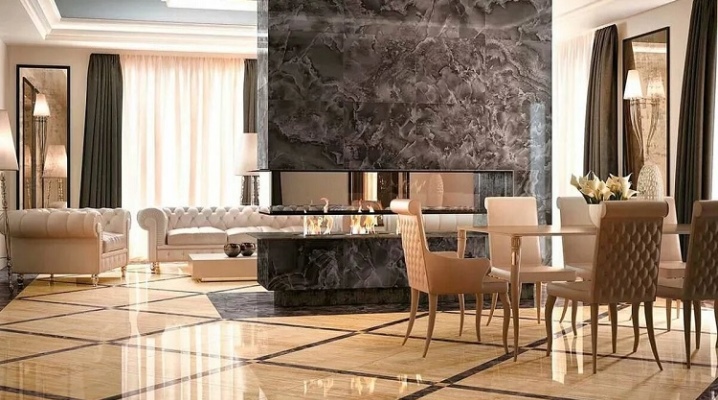
Marble is a valuable rock, it consists entirely of limestone, an insignificant content of dolomite impurities is allowed. A large selection of shades of this material is on sale, they all have their own characteristics and their own scope of use.
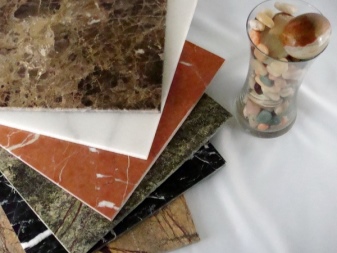
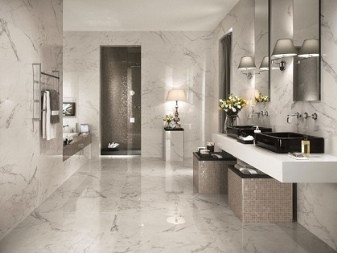
What does the color depend on?
Marble is an expensive natural stone. This rock has arisen as a result of prolonged transformation of crystalline calcite and dolomite. Translated from Latin, its name means "shining stone". And this is no coincidence - the breed shimmers and shimmers even in complete darkness. It was its radiance that attracted the attention of ancient sculptors many centuries ago. In those days, it was used for the manufacture of columns, statues, decorative ornaments, as well as for the interior facing of the premises of noble houses.
Initially, calcium carbonate has a white color, therefore marble in most cases is white. However, under the influence of weather and climatic factors, some other minerals may also be included in the rock, which give it different shades. The colors of the stone are entirely dependent on its deposit. Natural stone comes in gray, blue, pink, red, yellow, golden and brownish. There is marble with colored specks and veins.
The most expensive material is considered to be the material in which there are no inclusions at all, or the one that is found less frequently in natural conditions.
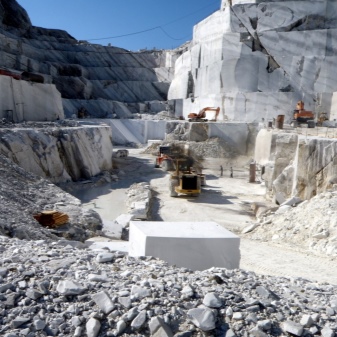
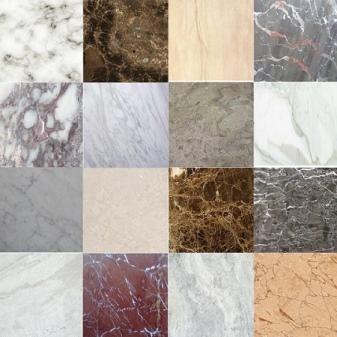
Common shades of marble
By color, this natural stone is divided into two large groups: white and colored. Black marble stands alone.
White and black
White stone is considered the most common and demanded in comparison with other colors. It is usually used to create architectural compositions. The stone is formed from the purest limestone, has a homogeneous fine-grained structure. Such marble has plasticity, it is in demand in the manufacture of ornaments, ornate patterns and figures of varying degrees of complexity. At the same time, this stone does not withstand temperature fluctuations very well, therefore its scope of application is limited to internal cladding, as well as the production of decorative items.
Black stone is a rare color. It is distinguished by a fine or medium-grained structure. The material is used for interior and exterior decoration. The most popular varieties of Italian stone are Nero Portoro Extra and Black & Gold. They differ from all other types of black stone by the presence of inclusions of gold color - such material looks impressive, but it is also not cheap.
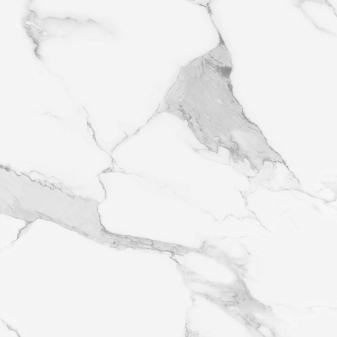

Colored
Colored stone is less common in nature, it can have a variety of colors. Experts identify several color options for marble.
- Blue. One of the rarest breeds at a high price. The material is distinguished by a coarse-grained structure and, accordingly, high fragility. Such material is in demand in the manufacture of decorative items that decorate the premises inside.
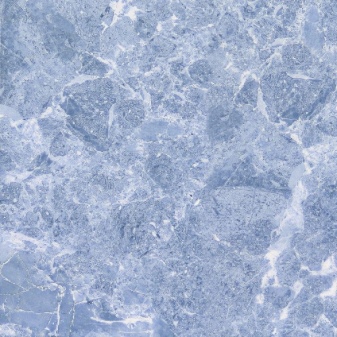
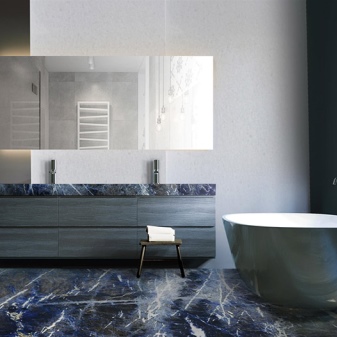
- Green. It is a stone with a fine to medium grained structure. It has sufficient density, it is not afraid of temperature jumps, so the stone has found its use when making the external facing of buildings. This is a plastic breed, the most intricate ornaments can be cut out of it.
The most popular green stone is the Italian Verde Ming stone.
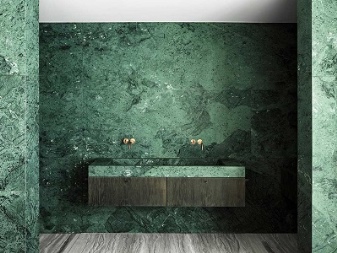
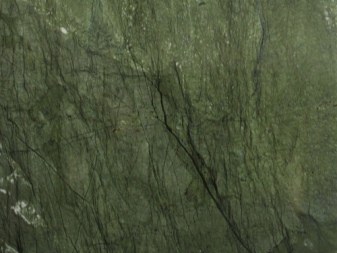
- Gray. In nature, it is presented in rich colors with a wide variety of textures. For all the brevity and restraint of the gray color scheme, its texture looks very picturesque. For wall decoration, it is used in tandem with red and gold stones, this combination allows you to create stylish accents in the design of rooms. Gray fireplace portals look very impressive, they fit especially harmoniously into the classic style. In addition, the material can be used to decorate window sills and as a floor covering, since dirt is practically invisible on the gray surface.
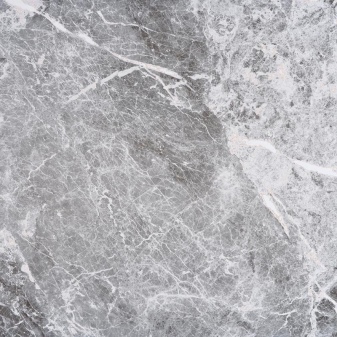
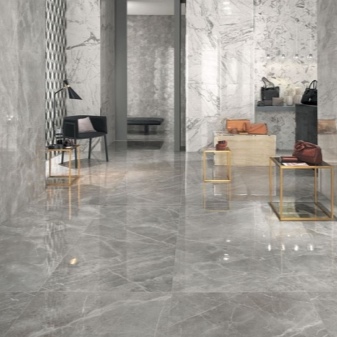
- Brown. Has a wide range of colors. Undertones of brown give the room an aristocratic look and at the same time fill the atmosphere with the warmth of the hearth. Brown is a practical material, especially used in the hallway and in the kitchen.
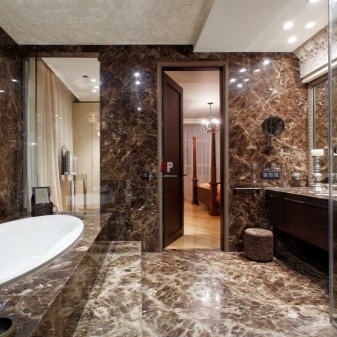
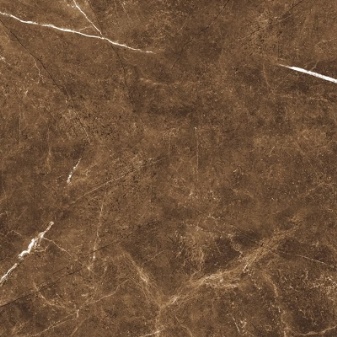
- Beige. One of the best selling materials. Its popularity is explained by the fact that marble of nude tones is harmoniously combined with any other colors, brings notes of stability and comfort to the atmosphere. Beige marble is commonly used for floor cladding. In addition, the stone is in demand when creating decorative elements, fireplaces, shelves and countertops.
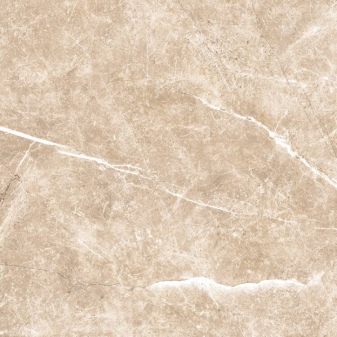

- Red. Optimal for creating striking design accents. Red shades charge the home with positive energy, fill it with cheerfulness. Red stone is available for sale in a wide variety of shading solutions. There are varieties with splashes and streaks of other colors - this material looks ambiguous, therefore, dictates a special approach to the decor.
The more common varieties of red stone with a fine-grained structure, they look more restrained and fit into the interior without problems.
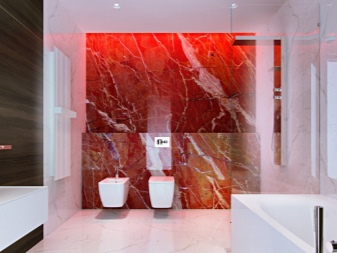
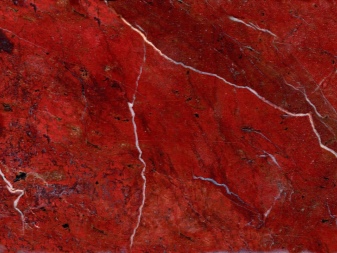
- Pink. The colors of the pink stone are characterized by a great variety, their color palette varies from nude colors to rich tones with contrasting splashes. Pink marble cladding looks stylish in any room, but the material reveals its decorative properties best when decorating a bathroom.
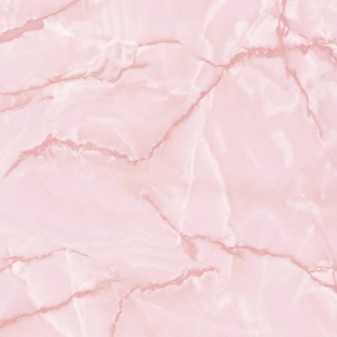
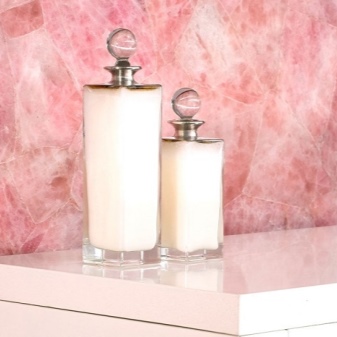
- Yellow. A truly luxurious stone in warm colors with subtle amber reflections. The stone of gold and yellow colors creates a cozy warm atmosphere in the room and brings a positive charge. The golden stone decoration makes any room brighter and more spacious. At the same time, the color palette of the yellow stone is multifaceted - from light sand tones to rich lemon colors with scarlet and red veins. Indoors, such a stone is used mainly to create decorative compositions. Mosaic panels are made from it, window sills are trimmed and tabletops are made.
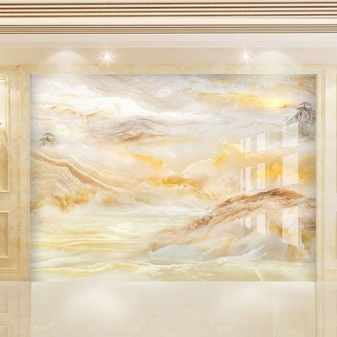
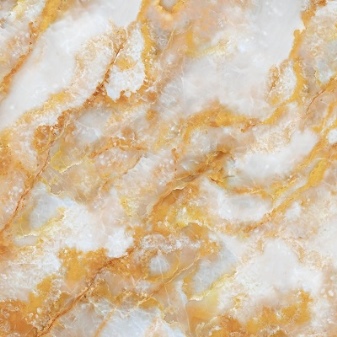
Interior use
Marble is very popular for interior cladding; designers use it in absolutely all stylistic directions. The most important thing is to adhere to the rules for combining decorative elements, then the marble details will equally effectively fit into the unshakable classics and modern, and rustic Provence and pompous Rococo.
- Classic. This is a combination of luxury and laconicism. Marble accessories are recognized as an indispensable element in the design of classic-style rooms. Small columns look the most harmonious here, as well as fireplaces and cornices made of this stone, figurines and other decorative accessories. Marble floors are a good solution. This decor should be combined with expensive wood furniture. As for the tint solution, the white stone looks the best.
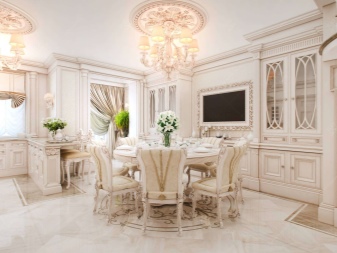
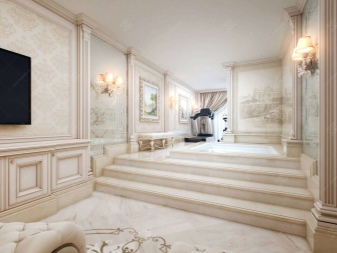
- Baroque. Here, the premises are literally full of an abundance of expensive decorative elements. A distinctive feature of this design trend is the sophistication of the finish. Marble columns, fireplaces and arches will be appropriate here.They go well with wood furnishings and precious metals. For example, a bed with gilding, wooden figurines inlaid with precious stones and gilded flowerpots will be an accurate hit in the style. The Baroque trend assumes decor in shades of brown.
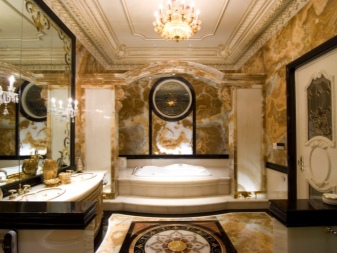
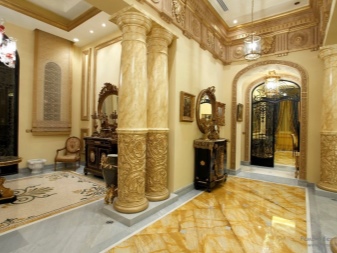
- Solemn classicism. This trend embodies the luxury and majesty of interior decoration. This decor is set in spacious rooms, preferably with high ceilings. Antique architectural elements, wide staircases and marble columns look especially impressive and expensive. You need to combine them with wooden furniture decorated with silk and satin fabrics. Chandeliers and mirrors, presented in a wide variety, will complement the decor. Such a combination of elements dictates its own requirements for the color scheme - the stone should be white, nude, pale brown or pink.
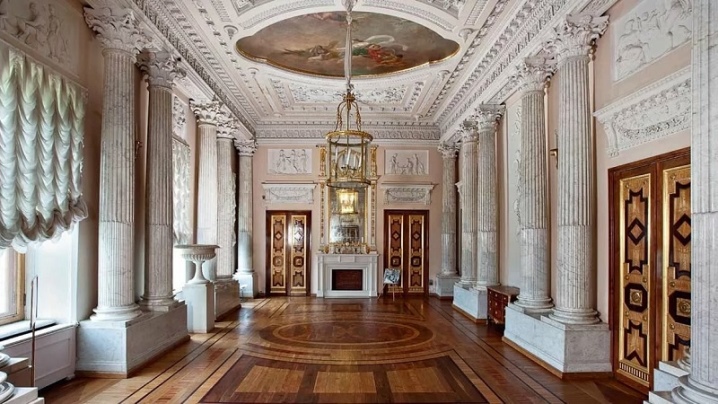
- Provence. Romantic rustic decor that brings an air of lightness and lightness to the interior. Usually in such houses, marble is used to decorate the flooring, white stone looks especially good. And also the material can be found in small figurines, candlesticks and picture frames. Provence suggests that stone details are combined with textiles, artificially aged furniture and flowerpots with fresh flowers.
Provence is dominated by light shades of blue, pink and yellow stone.
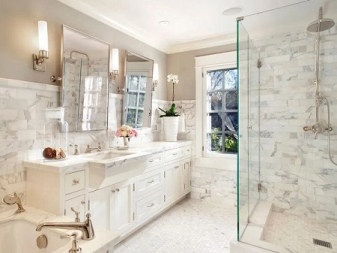

- Modern style. It brings together the most daring trends in design and architecture. Despite its ultramodernity, expensive stone can also be used here. Marble floors, sculptural compositions and precise columns fit into the concept of the trend. Furniture with marble legs, glass and metal decorative items are welcome here. The tint solution can be the most diverse - the main thing is that all the tones are combined and do not look flashy.
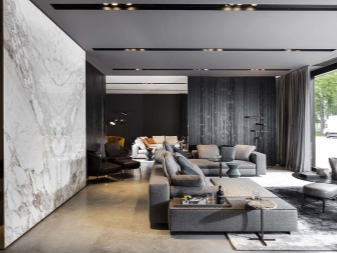
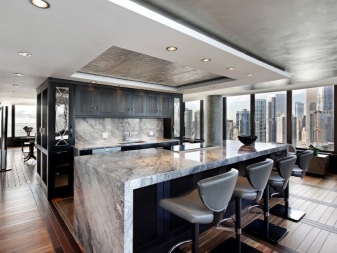
- High tech. Assumes maximum practicality and minimum decor. In such a room, any element has its own functionality. Here you can find the most modern household appliances and a maximum of high technologies. It is dominated by glass, wood and metal. Marble can also be used to create tables and shelves. The color scheme should be dark or light gray, it is allowed to use a stone of a sandy or beige shade.

- Fusion. It involves a combination of a variety of solutions. For such rooms, the saturation of the tint palette and the "combination of the incongruous" are typical. Here you can find antique bas-reliefs accompanied by Empire-style armchairs and a modernist table. Thanks to this, a good designer will always find an opportunity to use marble decor. For example, small panels, mosaics and figurines will look harmonious here.
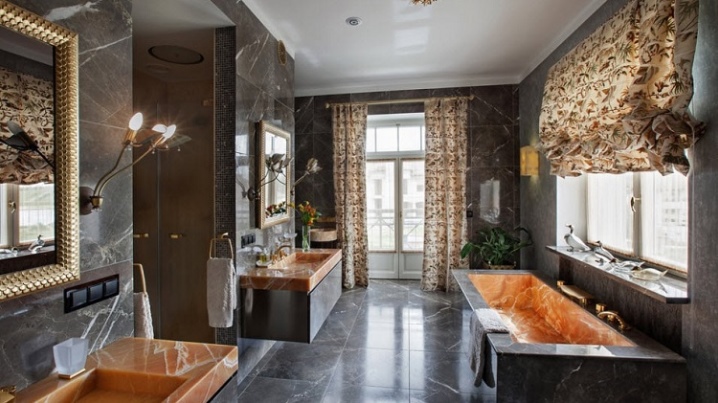
- Ecostyle. Adherents of this design prefer naturalness and naturalness in everything. It is quite natural that natural material is used here. Countertops are made of marble, flooring in the shower area and window sills are arranged. It blends harmoniously with ceramic, leather and wood décor details. Here, preference is given to light shades, therefore, light green, green and pale brown materials are used.
Marble is relevant in the premises of a wide variety of functionalities.
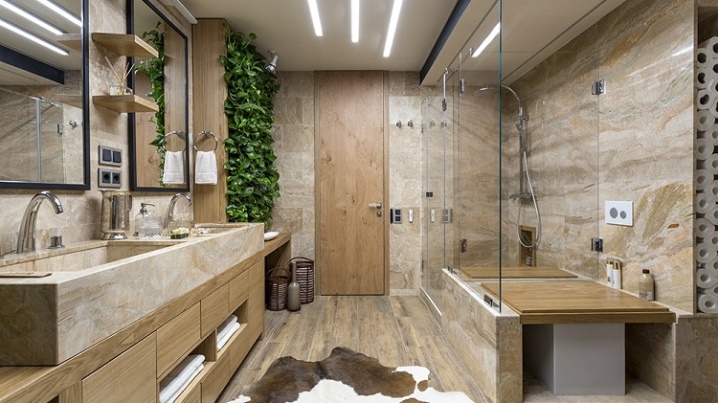
Bathroom
Marble is characterized by resistance to moisture, therefore it is optimal for decorating rooms with high humidity - in bathrooms and showers. It is used to make stylish sinks, as well as wall and floor coverings. In small spaces, a stone of light colors is used, this solution allows you to visually expand the boundaries of the room.
Tip: in order to create a stylish atmosphere, while not spending extra money, you can decorate the interior "marbled" in the bathroom. In this case, for finishing horizontal and vertical surfaces, they take high quality tiles that imitate the tone and texture of natural stone.
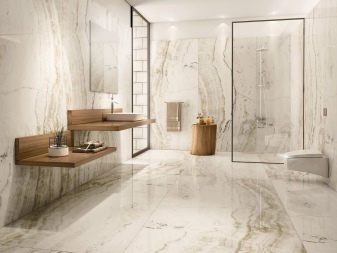
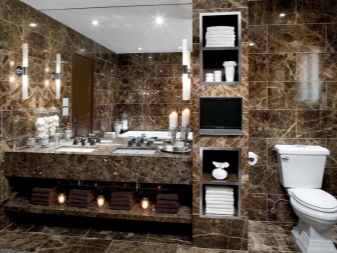
Kitchen
In kitchens, marble is used mainly for backsplash, countertops and flooring. However, if you intend to get a truly functional work surface, it is worth making a countertop made of artificial stone to look like natural marble.
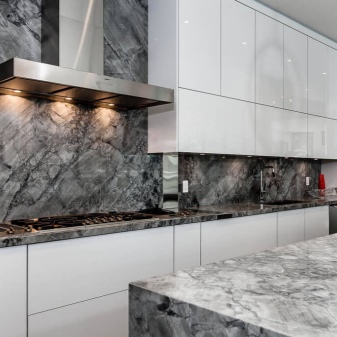
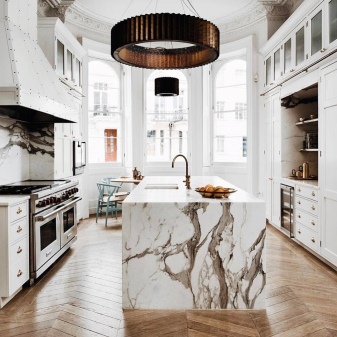
Living room
In the hall, marble brings a sense of aristocracy and nobility. Depending on the stylistic and shading design of the premises, different colors of the stone can be used. White and gray look especially advantageous, as well as light beige colors.... In living rooms, stone is usually used for facing windows and floors; in spacious rooms, fireplace portals look spectacular. In addition, statuettes, tabletops and columns can be made of stone. Marble has found its sphere of application in the decoration of bedrooms, it is relevant for the manufacture of dressing tables and nightstands.
The material can also be used to decorate walls - this way you can achieve the effect of spaciousness, this technique is especially good in small rooms. In recent years, stone mosaic has been rapidly gaining popularity. From such a stone, unique design compositions are collected, which later decorate the floor or walls. To create a mosaic, stones of the same kind of marble or stone of different colors can be used.
When decorating any room with marble, it should be borne in mind that it should be used sparingly, otherwise the room will be cold.
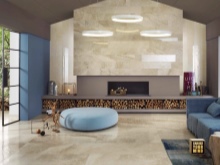
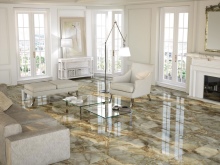

Facade options
Some types of marble have found their way into facade work. Facing houses with this stone is an indicator of material well-being, in addition, it testifies to the impeccable taste of the owner of the house and indicates a high social status. Craftsmen in warm countries are sure that only natural stone can be used for facing the outer walls of buildings and structures. Undoubted advantages speak in its favor:
- wide color palette;
- decorative texture;
- exceptional bactericidal properties, thanks to which the stone is resistant to the appearance of mold and mildew on the surface.
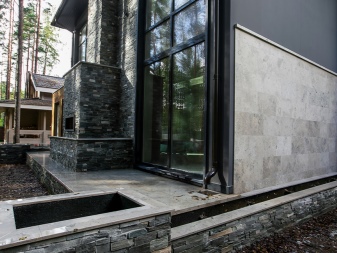
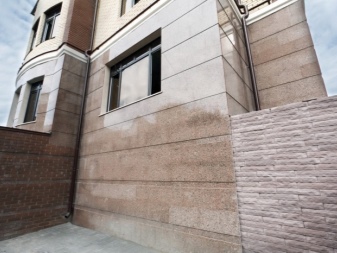
Unfortunately, natural marble facades are not without their disadvantages, and the main one is low frost resistance. That is why the material has become widespread in Italy and other regions of the Mediterranean basin, and in Russia it is used much less often. At the same time, the material tolerates heat more easily than freezing temperatures.
However, from the whole variety of varieties of marble, there are also frost-resistant ones (Carrara, Jurassic, Sayan). Such a stone retains its impeccable appearance even in the most severe conditions, it is no coincidence that the facades of the palaces of St. Petersburg are made of it.

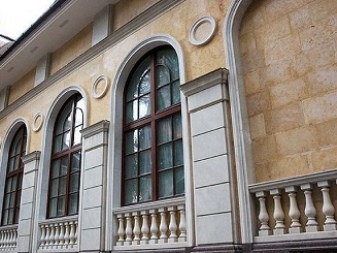
Application in landscape design
- The owners of private houses and the adjacent backyard territory strive to equip the surrounding space at the highest level, to make it unique and inimitable. The use of tumbling stone or marble chips can add zest to the site.
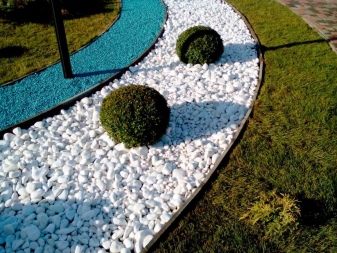
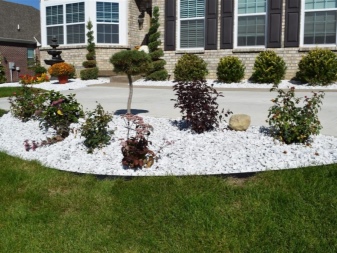
- Stone tiles are also widely used in landscape design. Garden paths are laid out with it and borders are drawn up.
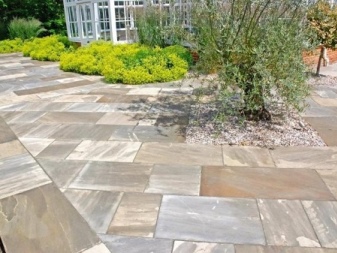
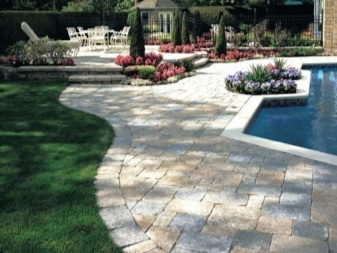
- Garden figurines are made of marble. Decor elements made of this natural stone look impressive and retain their impeccable appearance for many years.

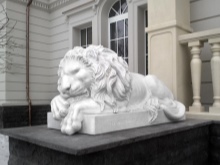
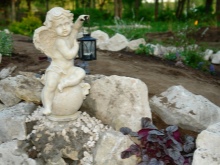













The comment was sent successfully.